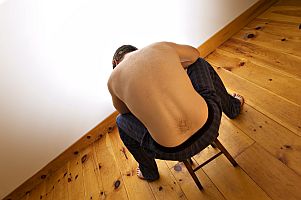 Subluxations are the primary reason for visiting A chiropractor. A subluxation occurs when one or more of the spinal vertebrae move out of position due to injury, stress or chemical imbalances. This can put pressure on the spinal nerves, causing them irritation, and resulting in pain. A chiropractor can locate these subluxations and gently realign your spinal vertebrae to remove the pressure on your spinal nerves.
Subluxations are the primary reason for visiting A chiropractor. A subluxation occurs when one or more of the spinal vertebrae move out of position due to injury, stress or chemical imbalances. This can put pressure on the spinal nerves, causing them irritation, and resulting in pain. A chiropractor can locate these subluxations and gently realign your spinal vertebrae to remove the pressure on your spinal nerves.
There is more to a subluxation, however, than simply the vertebrae moving out of place. Chiropractors refer to the state of subluxation as a vertebral subluxation complex (VSC). This refers to five different components of a subluxation that are affecting your body at the same time. These include the following conditions:
* Kinesiopathology – The loss of correct vertebral positioning in relation to the vertebrae above and below. This makes it difficult to bend and turn.
* Neuropathology – An irritation or injury to the spine’s nerve roots due to stretching, compression or chemical irritation from neighboring spinal structures. This disruption to the nerves can cause problems elsewhere in the body.
* Myopathology – Pathological changes to the muscles supporting the spine, which includes spasms, weakness, hypertonicity, muscle atrophy, fibrosis and inappropriate functioning. The scar tissue that results from these conditions results in more frequent subluxations that require adjustment.
* Histopathology – Pathological changes to the spinal tissues, which can cause bone spurs and other abnormal bone growth from the vertebrae and their joints, as well as adhesions and fibrosis of the spinal muscles and ligaments, inflammation, swelling, and dehydration, bulging, tearing and degeneration of the spinal discs.
* Pathophysiology – The biochemical abnormalities that take place in the region of the spine, such as biochemical waste products and inflammatory biochemicals coming from injured tissues.
Among the signs that you may have a subluxation are neck and back pain, soreness or stiffness, headache, joint pain, muscles spasms, and numbness, pain or tingling in the extremities.
A number of things can cause VSC, including auto accidents, alcohol, chemical imbalances, improper lifting, repetitive motion, bad posture, emotional stress and extended periods of sitting. When a person has VSC, it leads to considerable changes in the soft tissue in the area of the spine and also in the other tissues and organs of the body due to the disruption of proper nerve impulses coming from and returning to the spinal cord.
A chiropractor will be able to detect where these subluxations are in your spine and correct them with a spinal adjustment either using only their hands or assisted by a hand-held instrument to deliver a quick and gentle correction to the misaligned vertebrae. Correcting these misalignments sometimes takes a little time, as the tissues need to adjust to the new correct positioning of the vertebrae.
